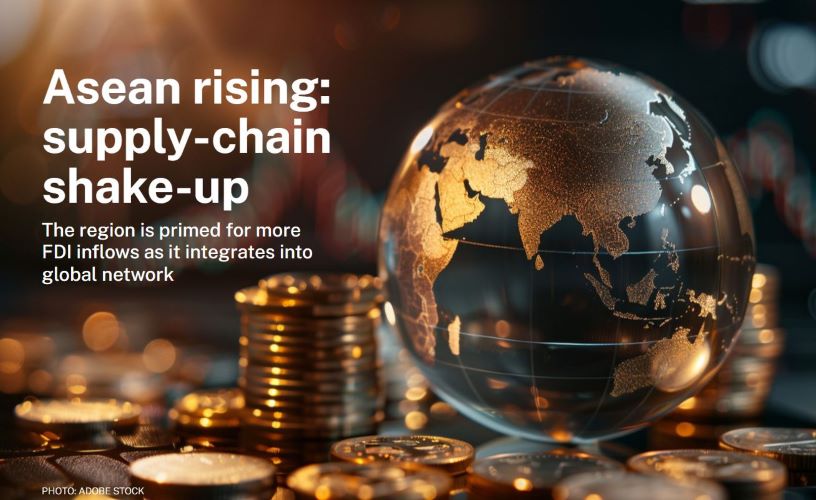Asean emerges as FDI inflow magnet
THE South-east Asian region is riding high as global supply chains shift, driven by geopolitical tensions and pandemic-related disruptions that are pushing more companies to adopt China+1 diversification strategies.
According to latest available data, foreign direct investment (FDI) into the region’s six major economies – Singapore, Indonesia, Malaysia, Vietnam, Thailand and the Philippines – surged 5.5 per cent to a record high of US$224 billion in 2022 from the previous year.
Singapore saw the highest increase in value, accounting for over 60 per cent of FDI in the region.
The region’s share of global FDI is also on the rise. From under 15 per cent in 2021, it rose to more than 17 per cent a year later, according to an investment report released last December by the Jakarta-based Asean Secretariat.
FDI for Malaysia, Singapore and Vietnam hit record levels in 2022, while Cambodia and Indonesia’s growth was flat, although levels of investment remained elevated.
The report noted that the inflows to Asean countries surpassed China for the second consecutive year.
A May 29 report by OCBC attributed the shifting trend of investment direction to a diversification of the global and regional supply networks, driven by strategies such as China+1 and friendshoring.
Strong domestic reforms and an encouraging macro environment are also sweetening the region’s proposition as an investment spot.
FDI inflows into Asean rose to US$236 billion in 2023, a 24 per cent increase from the annual average of US$190 billion between 2020 and 2022, said the OCBC report.
US dominates as Asean’s top investor
Over 71 per cent of FDI inflows to Asean are from the top 10 sources, compared to 63 per cent in 2021, with the US, Japan as well as China and Hong Kong taking the lead.
The US remained the region’s largest investor: investments rose 6 per cent to US$37 billion, with a bulk or around US$20 billion ploughed into the manufacturing and finance sectors.
Japan, the second highest investor (excluding intra-Asean investments), rose nearly 24 per cent to US$26 billion in 2022, focusing on storage, transportation, automotive parts, and activities related to electric vehicles (EVs).
On the other hand, China’s FDI inflows fell nearly 12 per cent to US$15 billion. About half of the investment was channeled to manufacturing, real estate, infrastructure and the digital economy. China was the largest investor in Cambodia and Myanmar.
The FDI inflows from China, said OCBC, indicate the changing backdrop, including geopolitical factors. “Post-pandemic, FDI inflows from China into the Asean region have sharply increased, diversifying from infrastructure development into electronics, resources and food industries,” said the bank.
All in the Asean family
Intra-regional investment rose for the third consecutive year to a record US$28 billion in 2022; it was also the second largest source of investment that year.
The top five industries – financial and insurance, manufacturing, information and communication, real estate, and energy – attracted 87 per cent of intra-Asean investment.
Indonesia, Singapore and Vietnam received two-thirds of intra-region investment. Singapore was the largest source, with US$18 billion, a 10 per cent increase from 2021.
Despite rising intra-Asean investment, the share of total FDI inflows has remained under 20 per cent since 2017, according to the investment report. The report estimated that the compound annual growth rate of non-Asean FDI inflows between 2015 and 2022 was 9.2 per cent – 2.5 times the growth rate of intra-regional FDI.
Source: The Business Times
Link: Here
June 13, 2024













